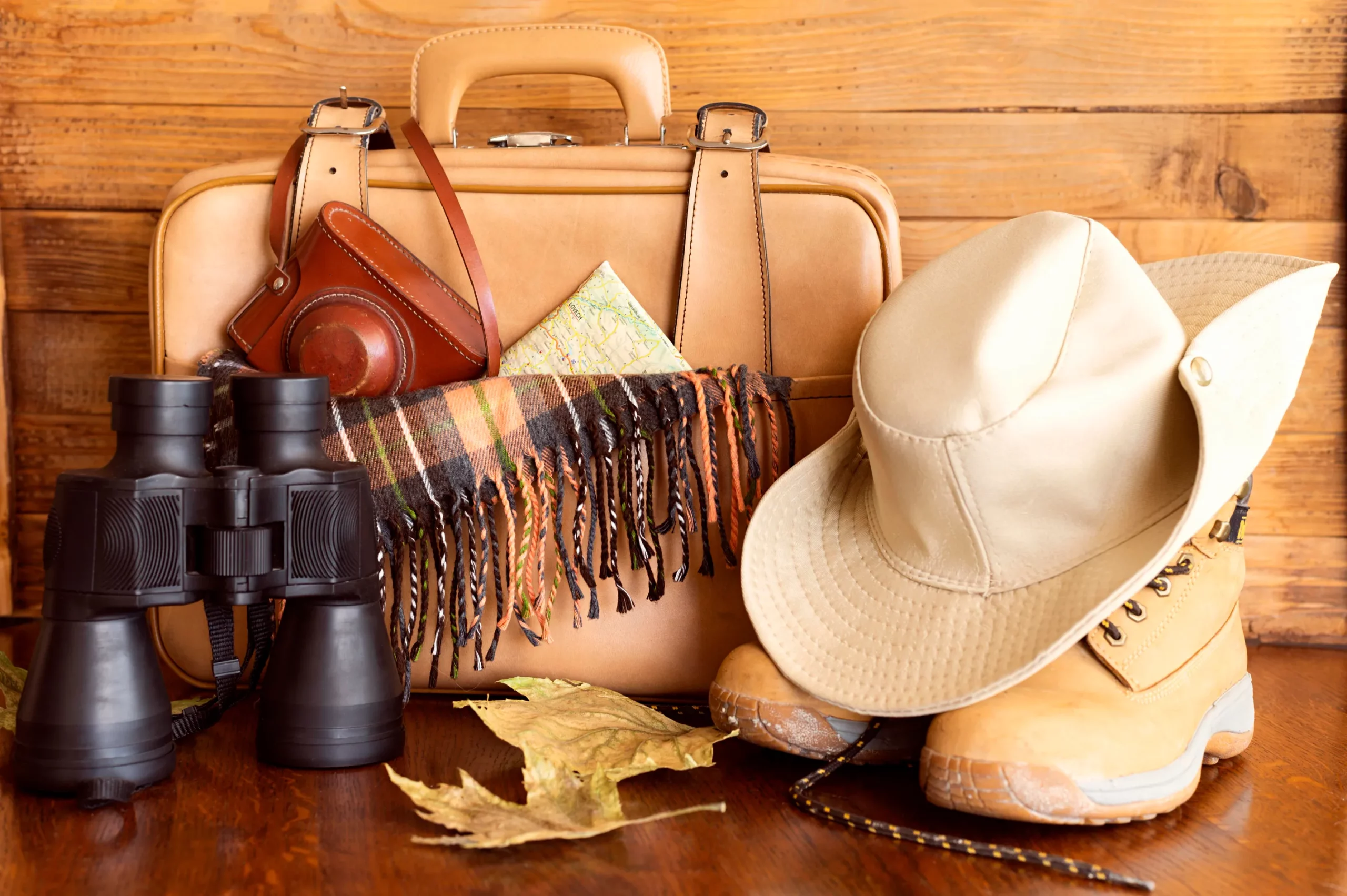
What To Pack For A Masai Mara Or Kenya Safari
Packing for a trip to Africa, especially for a Kenya safari or a Masai Mara adventure, can feel overwhelming even for seasoned travelers, let alone first-time safari-goers. It’s not just about throwing clothes into a suitcase; it requires careful thought about the weather, comfort, local culture, and much more. To help you out, we’ve put together a Kenya safari packing checklist below.
What To Pack
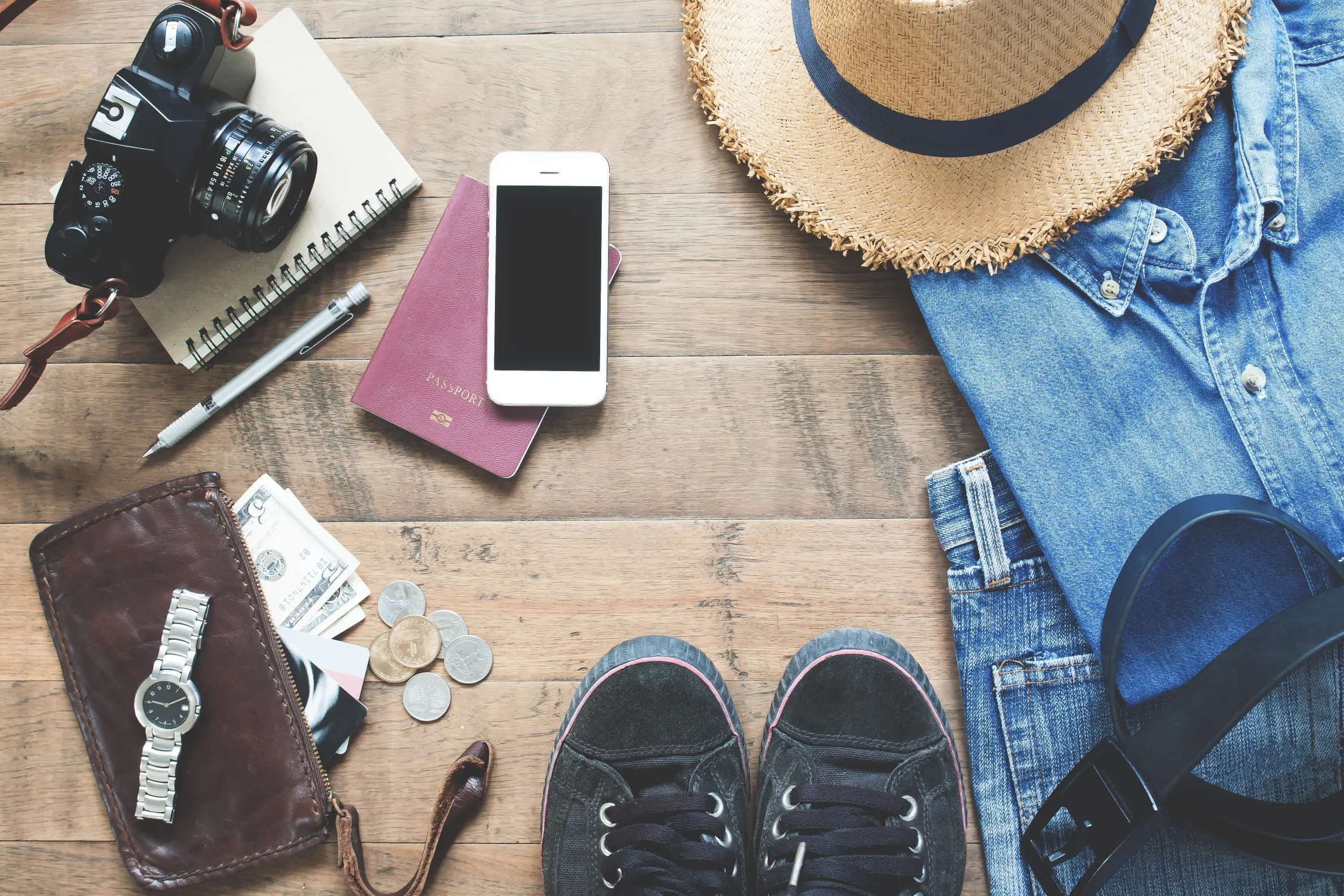
Packing for your Kenyan safari, whether you’re heading to the Masai Mara or another stunning safari destination, can feel a bit daunting. It’s not just about tossing clothes into your bag; you need to think carefully about the weather, your comfort, and respecting the local culture. To make things easier, we’ve created a handy Kenya safari packing guide for you.
This packing checklist is a helpful guide on what to bring for your adventure. Remember to pack light and use layers, as local airlines flying to different parks in Kenya have a typical luggage restriction of 15 kilos per person, including carry-on bags. Soft-sided bags or folding duffel bags are the way to go. While we detail everything below, your packing list should definitely include these essentials: safari clothes, shoes, a hat, sun protection, insect repellent, vital medications, and cameras or photography equipment, among other items.
Don’t forget your travel documents! Before starting your safari, check that you have your passport, health cards (like vaccination certificates if needed), airline tickets, credit cards, and insurance papers. Make sure everything is in order and up-to-date. Your passport should have at least two blank pages and be valid for six months from your planned exit date from Kenya.
A quick note: Kenya is committed to protecting the environment, so plastic bag usage is banned and illegal. Keep this in mind while packing.
Clothes
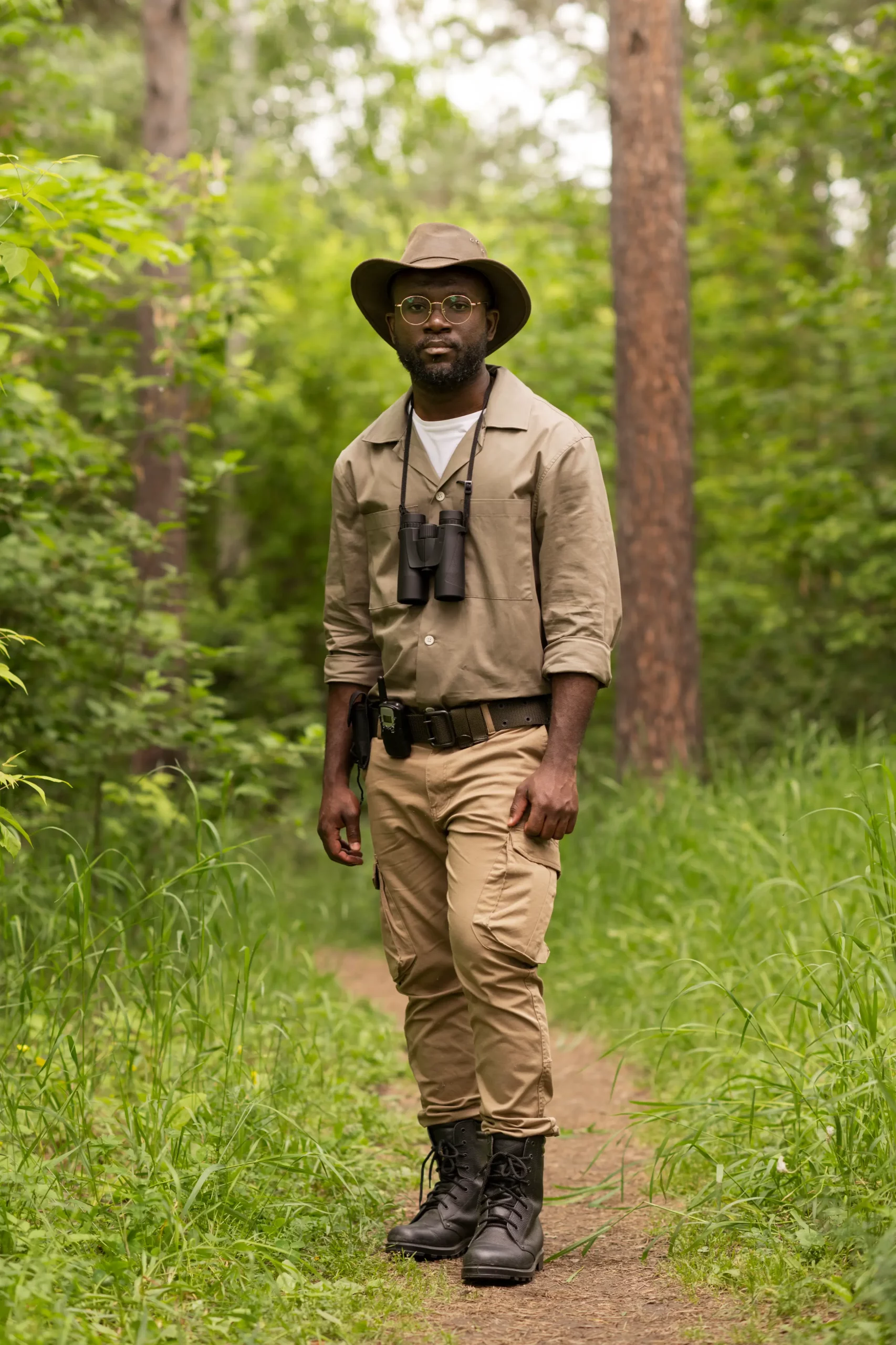
When packing for your safari adventure, it’s best to choose casual clothes that are loose-fitting and lightweight. This will help keep you cool and comfortable. For colors, go with neutral pastel shades rather than bright ones to blend in with the wilderness. Khaki and forest green are classic safari favorites and highly recommended. Be aware that camouflage or military-style patterns might be seen as illegal in East Africa, as they are worn by local forces, so it’s best to avoid them.
Don’t forget to pack a fleece, cardigan, or light jacket for those cool early mornings during game drives. Most lodges and camps offer laundry services, which is great for packing light. Here’s a basic list of essential clothing to bring: a short-sleeve casual shirt, two khaki long-sleeve shirts, a windbreaker or light jacket like a fleece jacket, a multi-pocket safari vest (especially handy for photographers), two pairs of khaki smart casual trousers or chinos, two pairs of safari shorts, three pairs of sport socks, two T-shirts, nightwear, swimwear, and a sports bra. If you’re staying at a five-star camp or lodge, bring a single set of smart, basic dinner wear, which is also useful for nights in Nairobi city or along the coast in Mombasa.
Shoes
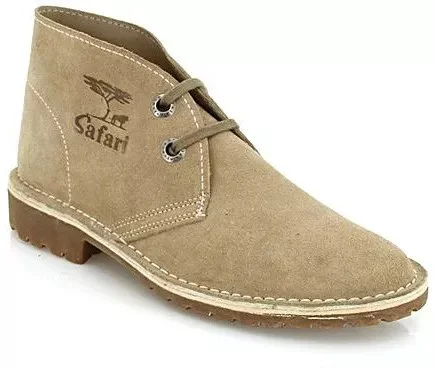
When you’re getting ready for a safari in Kenya, especially if you’re not planning on doing any trekking or “bush walking,” it’s best to pack lightweight, comfortable walking shoes. Sneakers with good grip are perfect for most of your adventures. But if you want a classic touch, consider the iconic Safari boots, also known as Chukka boots. They are a great all-around choice for any safari destination. If you’re thinking about hiking, then hiking boots could be useful, but they might feel a bit heavy if you’re not actually planning to trek. For relaxing by the pool or in your room, flip flops or sandals are super handy and can be easily purchased in Nairobi if you need them.
Medication
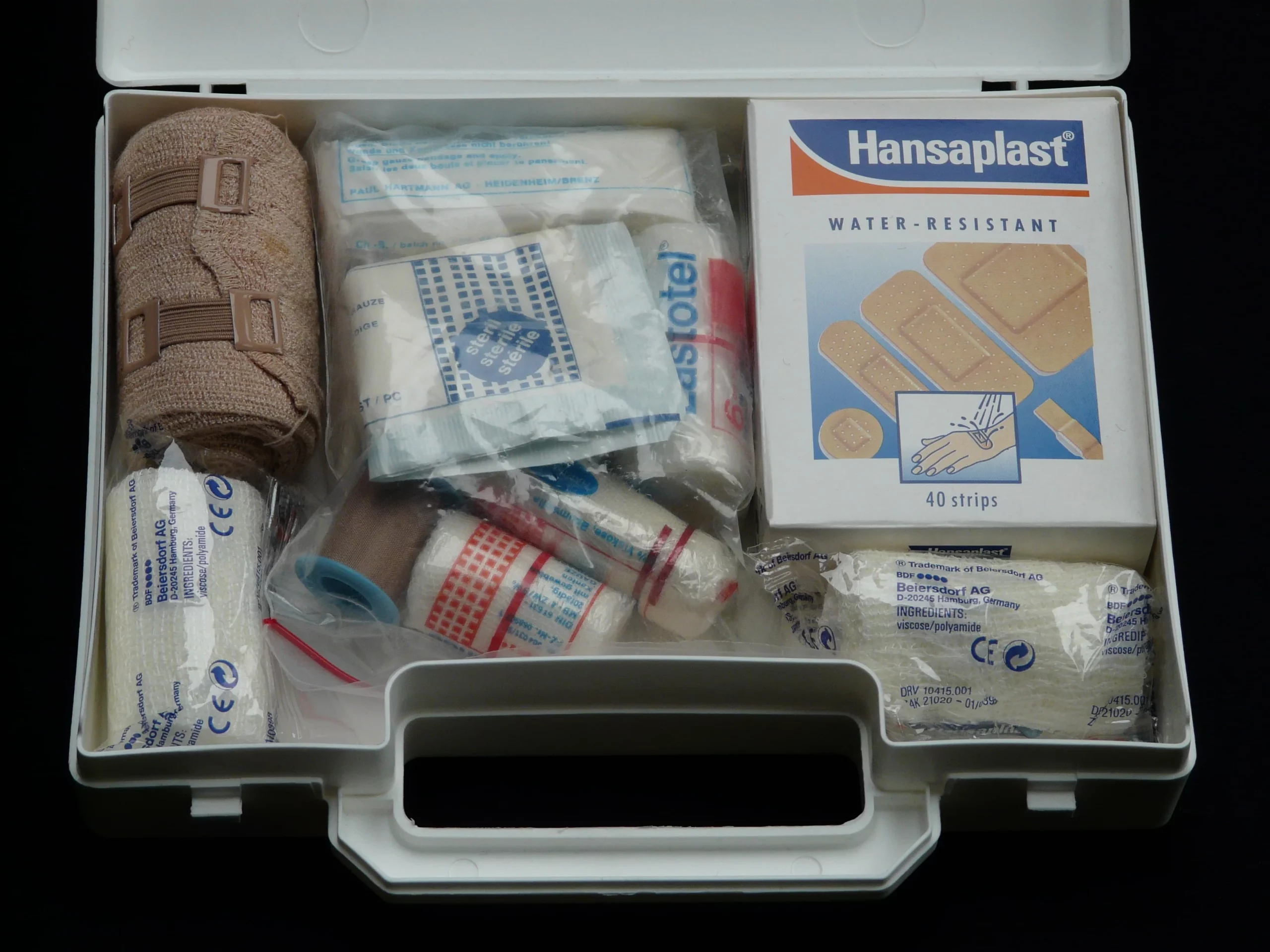
When you’re on a safari in Kenya, you’ll be exploring the “bush,” which means the nearest town or city could be quite far away. That’s why it’s super important to pack your most essential personal medications, especially those specific brands or medicines that might not be available in Kenya. Although pharmacies in Nairobi have a wide range of medicines for basic needs like pain relief, anti-malaria pills, or antacids, it’s always best to be prepared. Don’t forget to bring any prescriptions with you, just in case you need to show them at the airport when entering Kenya. This way, you’ll have peace of mind knowing you have everything you need for a safe and enjoyable adventure.
Insect Repellant

While many lodges and camps might offer insect repellent, it’s always smart to bring your own favorite brand. Repellents containing DEET are known to be quite effective against most insects and bugs. However, if you’re concerned about DEET’s effects, a natural citronella repellent can also work well. It’s a good idea to talk to your doctor or pharmacist before you go, just to be sure you’re making the best choice for your trip.
Hats And Sun Protection
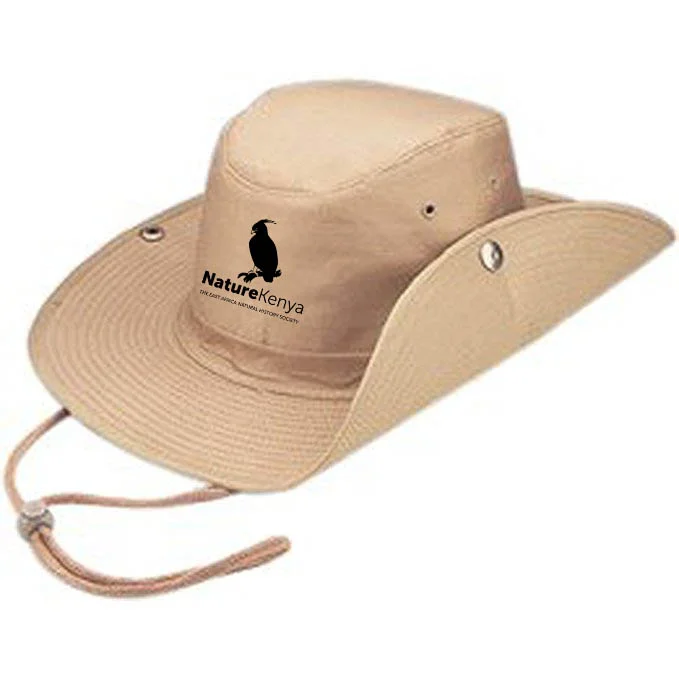
For sun protection, it’s a smart idea to pack a sunscreen lotion with a high enough SPF. Also, don’t forget a wide brim safari hat, which is perfect for shading your face and neck from the intense sun. A good pair of sunglasses is essential, and if you wear contact lenses, it’s wise to bring your prescription glasses too, as the dust can make contacts uncomfortable.
Cameras, Binoculars, Travel Adaptors & Laptop
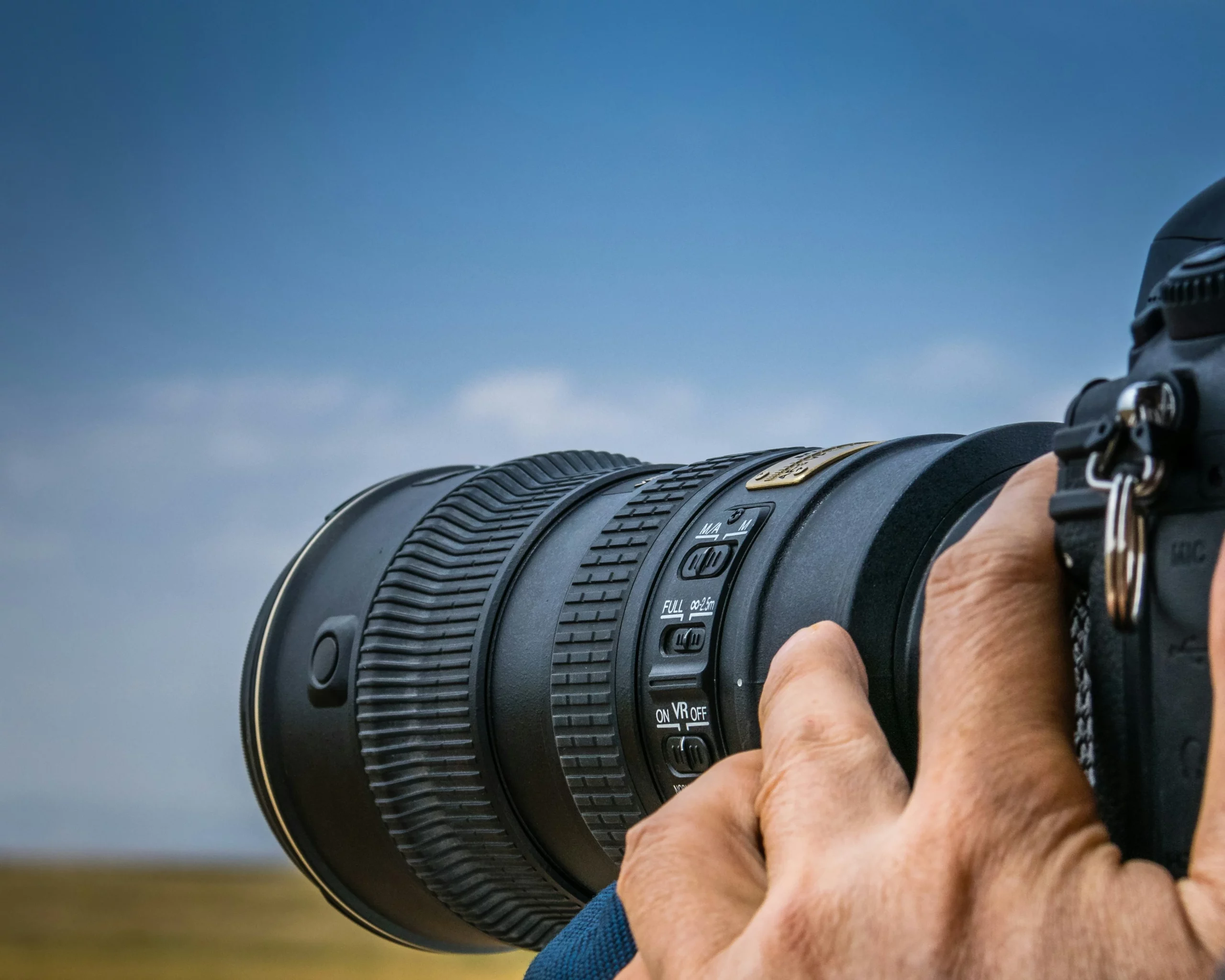
When it comes to cameras and photography gear, it’s best to pack them in your carry-on luggage for added safety. East Africa is full of breathtaking photo opportunities, so having a good camera will help you capture those special moments. Binoculars can be really handy too. Some safari operators might provide them, but they could be basic, so it’s a good idea to bring your own pair if you have one you prefer.
For those who love photography, bringing a laptop can be very useful. You can download and edit your photos after an exciting day on safari, plus it helps you free up space on your camera’s storage cards by transferring images to your laptop or an external hard drive.
In the Masai Mara, you can find spare AA and AAA batteries at some lodges, both standard and rechargeable. For electrical sockets, make sure to pack a couple of travel adaptors. In Kenya, we use plug type G, which has three rectangular pins in a triangular pattern. The country operates on a 240V supply voltage and 50Hz, so it’s important to be prepared.

Other Stuff
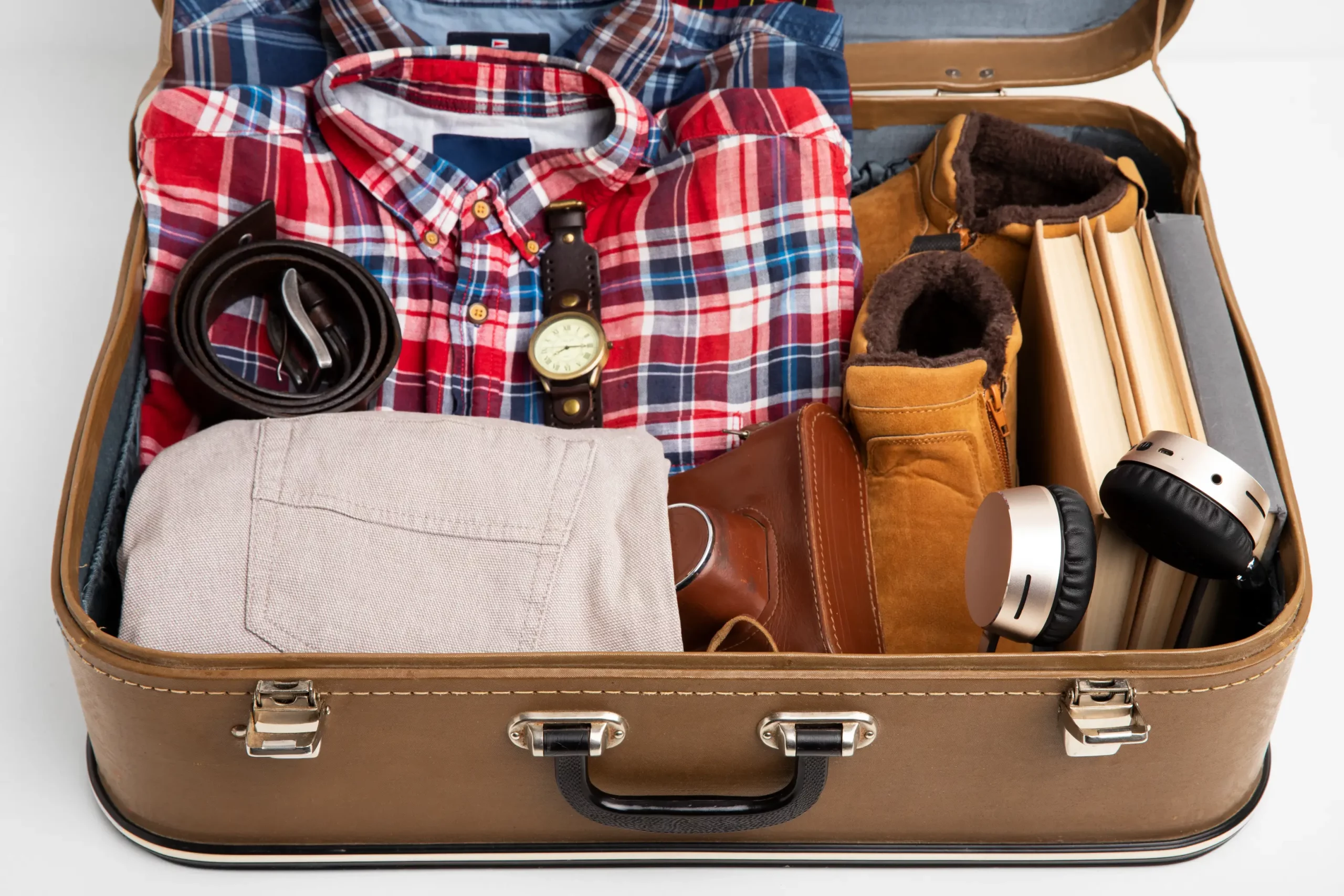
When packing for your Kenya safari, don’t forget some essential personal items. You’ll want to bring your own toiletries like travel-size shampoo, conditioner, soap, deodorant, moisturizer, toothpaste, toothbrush, and a hairbrush. Ladies, make sure to pack your sanitary products. Wet wipes and hand sanitizers are super handy for freshening up on the go. A small sewing kit, small scissors, and a pocket knife (remember, not in your carry-on bag) can be lifesavers for unexpected situations. An alarm clock ensures you wake up on time for those early morning game drives. Keep your cash safe with a money pouch or money belt. For downtime, bring along some reading materials, a pen, and a notebook to jot down your safari adventures. These items will help you stay comfortable and organized throughout your trip.
Pro & Cons Of Flying To Masai Mara
As we mentioned earlier, flights from Nairobi to the Masai Mara have a luggage limit of 15 kilos per person, including both checked and carry-on bags. This often raises the question: is driving a better option, especially for photographers with heavy camera gear? The biggest perk of flying to the Masai Mara is that it’s fast and comfy, taking just about an hour compared to a long 5 or 6-hour drive. Remember, these are small planes, specially designed for bush airstrips. Some can seat up to 38 people, but most have only 4 to 16 seats, with the pilot sitting right there with you, usually in the trusty Cessna planes.
On the flip side, flying can be more expensive, particularly if you’re traveling in a group of two or three or more. And, of course, the baggage limit is another downside to consider.
